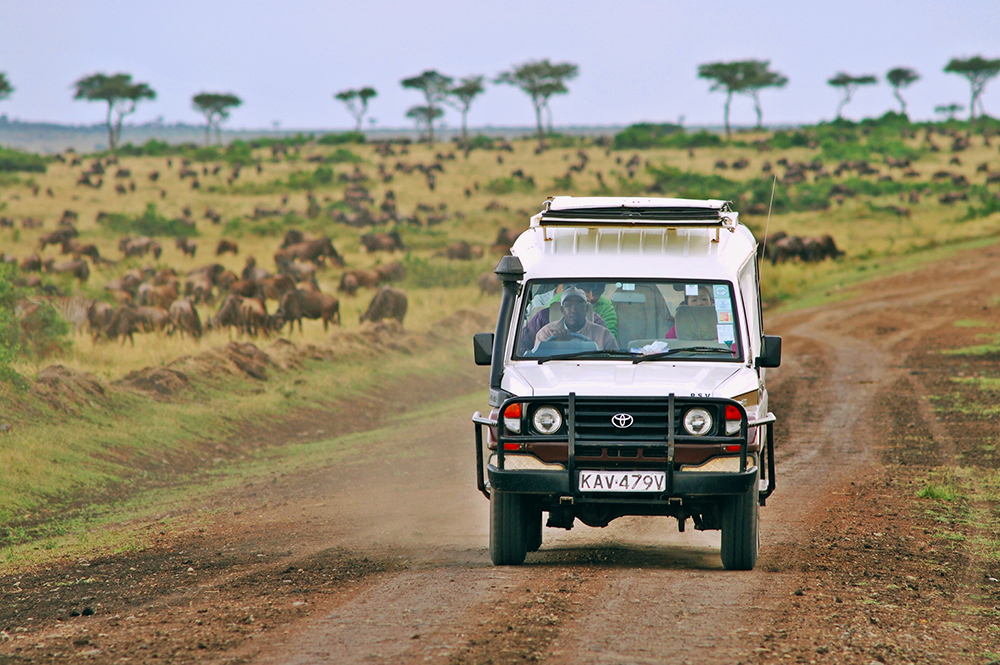Facilities

Maasai Mara
The Masai Mara National Reserve is located southwest in Kenya, adjoining to the Tanzanian boarder and is at altitude from 1,500m to 2,170m, comprising 1,672 km2.
In Maa, the language common to the Maasai clans, the word mara means "spotted" - referring to the clusters of bush dotting the plains.
Many people consider this to be the richest of the Kenya game areas. There is grassland, dense bush, thickets and forest, and the Mara is a permanent river. Animals have no respect for boundaries, and hundreds of buffalo and wildebeest can be seen at certain times of the year, as part of the Mara lies across their migration route from the Serengeti in Tanzania. In the Masai Mara you really feel you are in the heart of Africa. It is fine country for lion, and you can hardly fail to see them. All the Big Five can be found - lion, leopard, elephant, buffalo and rhino, as well as nearly every other kind of animal found in all the other parks in Kenya such as plains zebra, giraffe, Coke's hartebeest, topi, impala, Thomson's and Grant's gazelle, Defassa waterbuck, buffalo and cheetah.

Vehicles & Guides
Our safari vehicles are enclosed 4WD Land Cruisers that have been specially modified for comfort on game drive, with heightened roofs with viewing hatches giving greater visibility from the windows and the hatches. In addition, being 4WD they can traverse difficult terrain. Each vehicle shall be shared by a maximum of 6 guests with all the guests having a window seat.
A knowledgeable safari guide makes as enormous difference to appreciating the wildlife and its habitat, as well as giving an insight into the culture of the country. All our guides are KPSGA (Kenya Professional Safari Guides Association) qualified, and have spent many years in the bush and know it well. The KPSGA guides have a broad knowledge of wildlife, conservation, tourism, flora and fauna.

Private Safari
Normally each vehicle shall be shared by a maximum of 6 guests, however, an exclusive game drive can be arranged depending on the availability of vehicles at an extra cost.
For those who would like to have a privacy or particular purpose such as observing the crossings of wildbeests which normally requires more time at the crossing point, we recommend the private safari. Please note that when you request an exclusive game drive, we consider you renounced your claim to join the game drive scheduled and included in the package, and is not refundable.

The Migration
As Tanzania's plains fade to yellow after the summer rains, millions of beasts act as if responding to a central impulse. The horizon fills, as far as the eye can see, with 1.4 million wildebeest and 200,000 zebra, eland and gazelle, tracked relentlessly by opportunistic predators. This is the Great Migration - one of the most awe-inspiring sights on earth. Dwindling food sources command the first beast of this primal march, which begins on Tanzania's southern Serengeti plains. As if following an ancient rallying call, the great herds migrate north towards the Masai Mara plains.
By late July the animals have massed along the swollen Mara River - their final barrier from the sweet grass ahead. With wild eyes, they plunge in to brave the crocodiles awaiting abundant and easy pickings. Of those that survive the reptiles' rapacious jaws, many drown or fall pray to lions waiting in ambush on the opposite bank. This dramatic life-and-death struggle is nature's annual theatre. A living tapestry of waving savanna, sheltering thorn trees, rounded hills and tall gallery forest, the visual feast of the Masai Mara draws photographers and visitors from across the globe.
